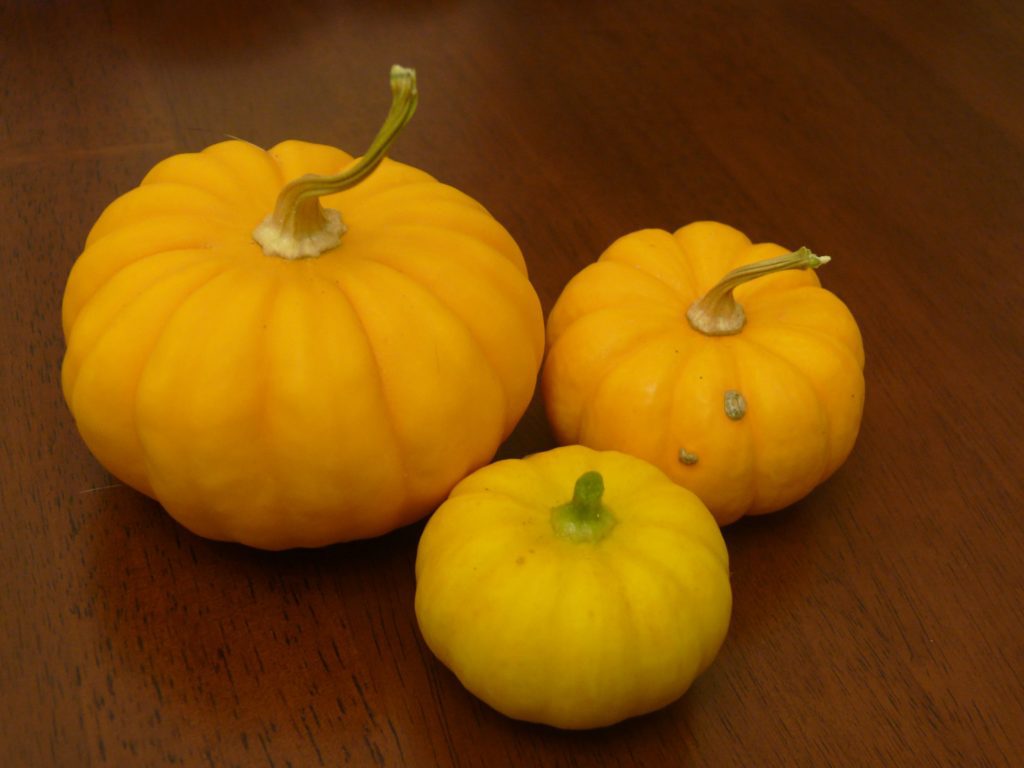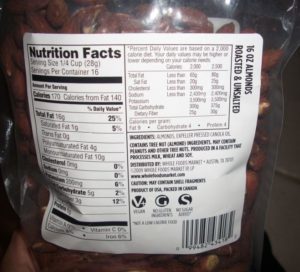 It’s hard to believe that Halloween is right around the corner when most of the leaves are green, but here we are. Because it’s been such mild weather thus far, our pumpkins are still alive and growing well!
It’s hard to believe that Halloween is right around the corner when most of the leaves are green, but here we are. Because it’s been such mild weather thus far, our pumpkins are still alive and growing well!
Halloween can create more obstacles on on a gluten-free diet, so I have tips here on how to handle Halloween with food restrictions. I’m a big advocate for non-food treats for trick-or-treaters. It’s helpful both for your waistline, and it’s also a gift to have safe options for the many children with Celiac, gluten-sensitivity and/or allergies in your neighborhood. There are lots of fun options, like rubber duckies, slinkys, yoyos and other small toys, and you can list your house as a safe option for kids on special diets through the “Teal project”. Bonus: you can save leftovers for next year. If you do choose the candy route, choose carefully–some candies that are normally gluten-free have wheat in the holiday versions.
“Made in a shared factory/shared equipment statements”
Over the past few years, these statement have been a major source of frustration and confusion for the gluten-free community. Because these are voluntary statements, it’s been difficult to assess the relative risk of these foods, and of course, the absence of a statement doesn’t mean anything, either. Most people see those as warnings of increased risk of gluten contamination, and allergy guidelines recommend removing those products, but according to a recent study, products with those warning statements are not useful for determining which products contain gluten or wheat.
Tricia Thompson of Gluten-Free Watchdog, Trisha Lyon and Amy Jones authored Allergen advisory statements for wheat: do they help US consumers with Celiac disease make safe food choices? Surprisingly, in that study, foods with the allergen (made in a factory) statement warnings were less likely to contain gluten that packages that said nothing at all. It is a small study, but it’s an important conversation to have.
Most people I see are avoiding the “made in a factory” statements and instead choosing products without those warnings. At the very least, this provides a false sense of security.
So, best practices:
- Buy products with a gluten-free certification, such as through the GIG or CSA. This is especially important for flour and grain products.
- Buy products specifically marked “gluten-free”.
- Ask questions when you can, and email or contact the company. Manufacturers only go to the effort of labeling and testing for gluten if they believe it will influence the bottom line.
- Avoid all bulk bins, or situations with known cross contamination risk.
- Do monitor your Celiac antibody numbers yearly. They’re not perfect, but if they are positive, they’re an indicator of ongoing gluten consumption.
- Help advocate for change. FDA needs to do a better job and actually define those statements–or better yet, require companies to monitor and/or eliminate cross contamination with major allergens. We, collectively, can and should be doing better. So many people’s health is at stake.
Of course, ideally you also choose naturally gluten-free, unprocessed or less processed foods when possible.
Have a beautiful autumn.
Cheryl Harris, MPH, RD is a Registered Dietitian Nutritionist and Certified Wellcoach in Fairfax & Alexandria, VA. She helps people with a range of dietary issues, including Celiac Disease, digestive issues, food allergies, pregnancy, breastfeeding, vegetarian and vegan diets, preventing diseases and “whole foods” eating. Let’s get you on your way to achieving your goals and feeling great! Email or call 571-271-8742.
